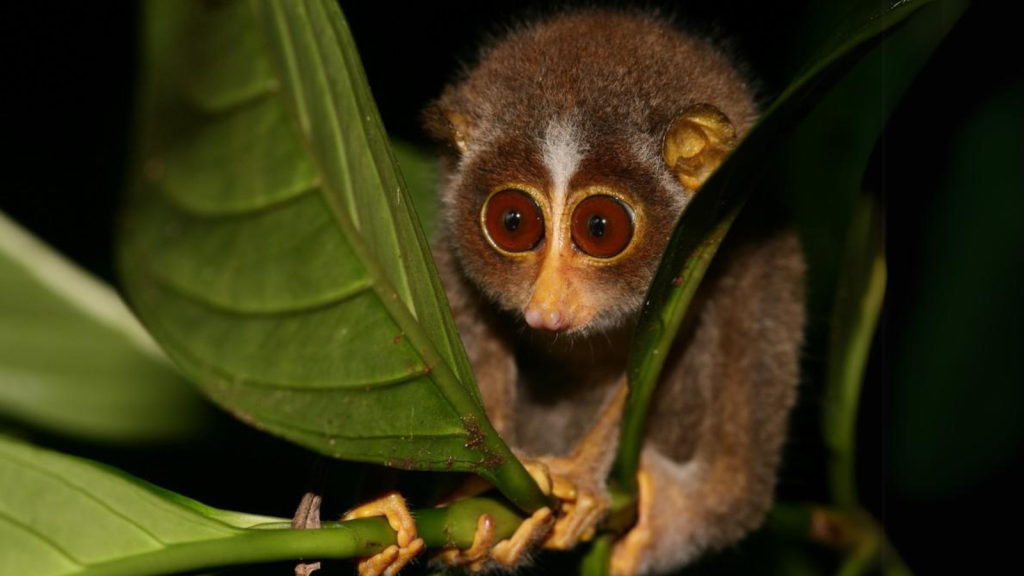While we might be familiar with the impressive gorillas and chimpanzees of Africa and Asia, the Old World is also home to a fascinating array of pint-sized primates. These diminutive creatures, often overlooked in favour of their larger cousins, are marvels of evolution in their own right. From the tiny mouse lemurs of Madagascar to the petite tarsiers of Southeast Asia, these small primates have adapted to fill unique ecological niches. Join us on a journey across Africa and Asia as we explore the 15 smallest Old World primates.
Madame Berthe’s Mouse Lemur
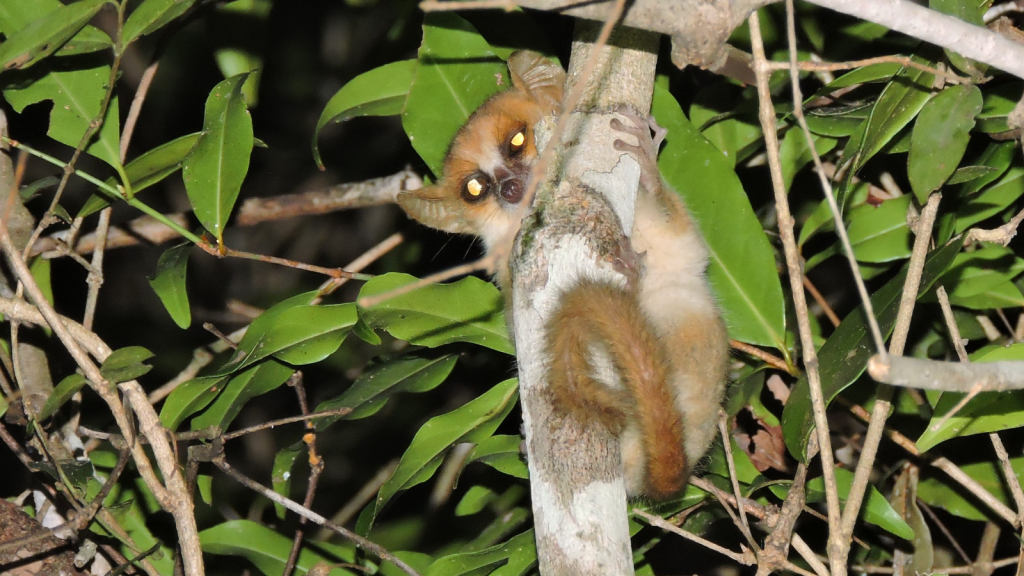
Madame Berthe’s mouse lemur holds the title of the world’s smallest primate, weighing a mere 30 grams. Found only in the Kirindy forest of western Madagascar, these tiny creatures are nocturnal and have enormous eyes to help them see in the dark. They feed primarily on insects and fruit, using their long fingers to grab prey. Despite their small size, they can leap over 3 metres between branches. Madame Berthe’s mouse lemurs have an incredibly fast metabolism, requiring them to eat up to a third of their body weight each night to survive.
Goodman’s Mouse Lemur
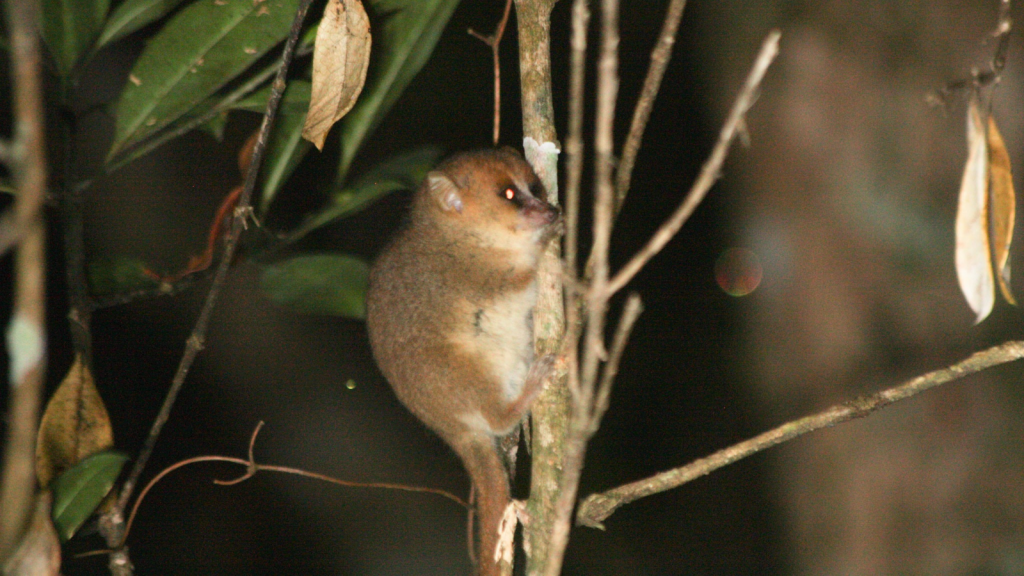
Goodman’s mouse lemur is the second smallest primate, weighing around 44 grams. Like its slightly smaller cousin, it’s found only in Madagascar. These tiny lemurs have a unique ability to lower their body temperature and heart rate during the dry season, entering a state of torpor to conserve energy. They have a distinctive white stripe between their eyes, which helps distinguish them from other mouse lemur species. Goodman’s mouse lemurs are exceptionally long-lived for their size, with some individuals in captivity reaching up to 13 years old.
Pygmy Mouse Lemur

The pygmy mouse lemur weighs in at about 50 grams and is found in eastern Madagascar. These tiny primates are known for their ability to store fat in their tails, which they use as an energy reserve during the dry season. They have an exceptionally high-pitched call, which they use to communicate with other members of their group. Pygmy mouse lemurs are excellent climbers and can often be seen clinging vertically to tree trunks. Their eyes are so large relative to their body size that they can’t move them in their sockets, forcing the lemur to move its entire head to look around.
Hairy-Eared Dwarf Lemur
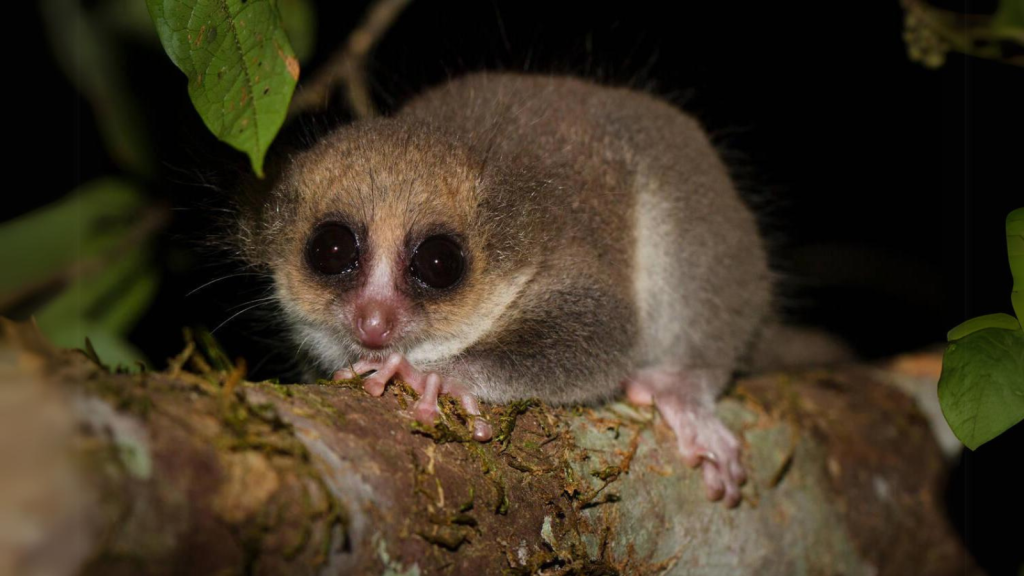
The hairy-eared dwarf lemur, weighing around 80 grams, is known for its distinctive tufts of hair protruding from its ears. Found in the eastern rainforests of Madagascar, these primates are rarely seen due to their nocturnal habits and small population size. They have specialized toilet-claw nails on their toes, which they use for grooming. Hairy-eared dwarf lemurs are one of the few primate species known to hibernate for extended periods. During hibernation, their heart rate can drop to as low as 6 beats per minute, compared to their normal rate of about 180 beats per minute.
Tarsier

Tarsiers, found in the islands of Southeast Asia, weigh between 80-150 grams. They’re known for their enormous eyes, which are fixed in their skull – tarsiers must turn their entire head to look around. These primates are entirely carnivorous, feeding mainly on insects and small vertebrates. Tarsiers can rotate their heads almost 180 degrees, much like an owl. Their enormous eyes are actually larger than their brains and take up so much room in the skull that the tarsier’s olfactory bulbs have been pushed to the side of the brain rather than the front.
Sunda Slow Loris
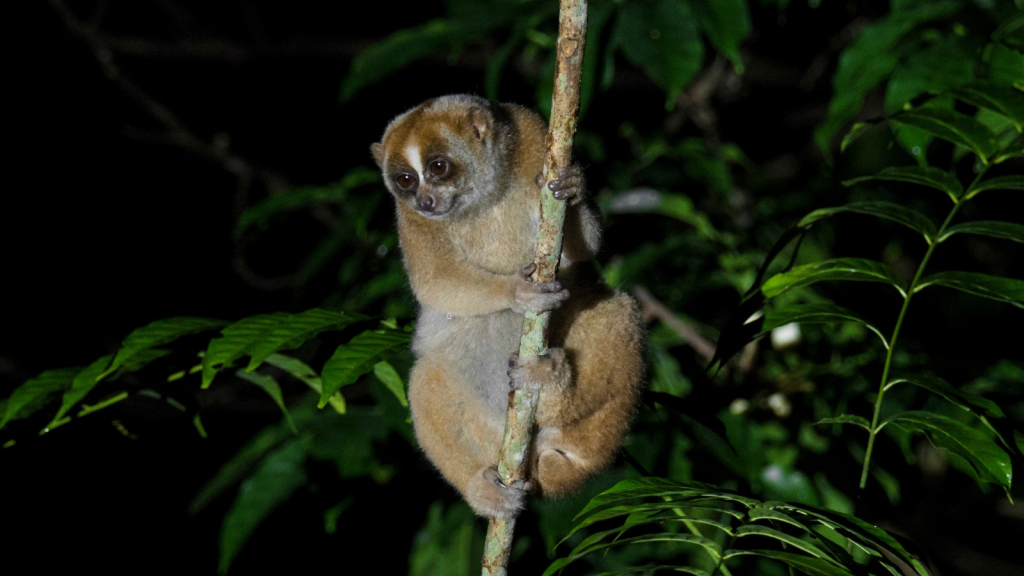
The Sunda slow loris, weighing between 265-300 grams, is found in Southeast Asia. These primates are known for their slow, deliberate movements and their ability to hang from branches for long periods. They have a unique defence mechanism – their saliva is mildly venomous when mixed with secretions from glands on their arms. Slow lorises are one of the few venomous mammals in the world. Despite their name, slow lorises can move quickly when necessary and have been observed sprinting short distances at speeds up to 8 km/h.
Javan Slow Loris
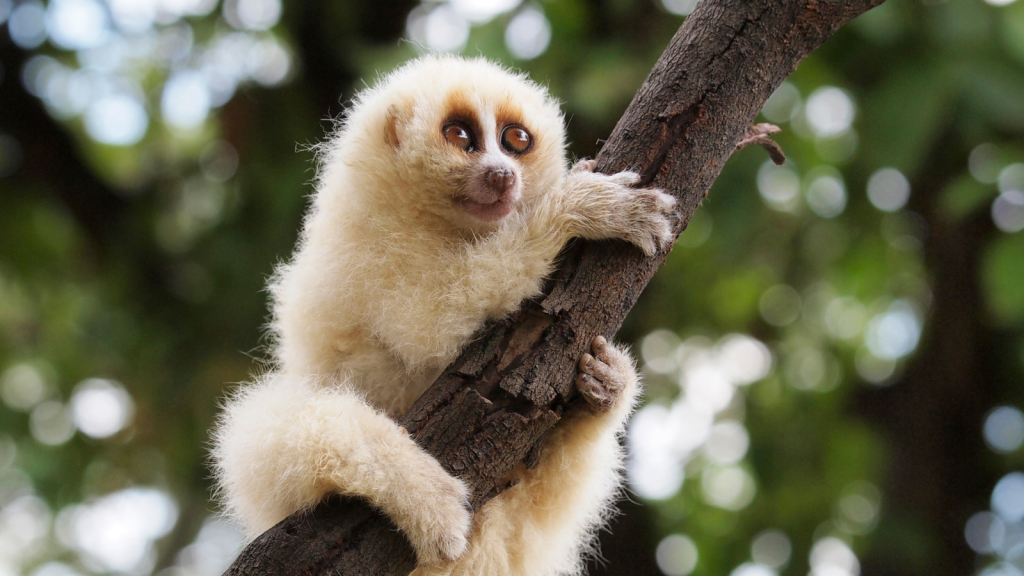
The Javan slow loris, slightly smaller than its Sunda cousin, weighs between 230-250 grams. Found only on the island of Java in Indonesia, these primates are critically endangered due to habitat loss and the illegal pet trade. They have a distinctive ‘face mask’ pattern of dark fur around their eyes. Like other slow lorises, they have a toxic bite, which they use for defence and possibly to paralyze their insect prey. Javan slow lorises have a unique form of locomotion called ‘cantilevering’, where they stretch across gaps between branches using their long limbs, moving with remarkable stability and precision.
Slender Loris
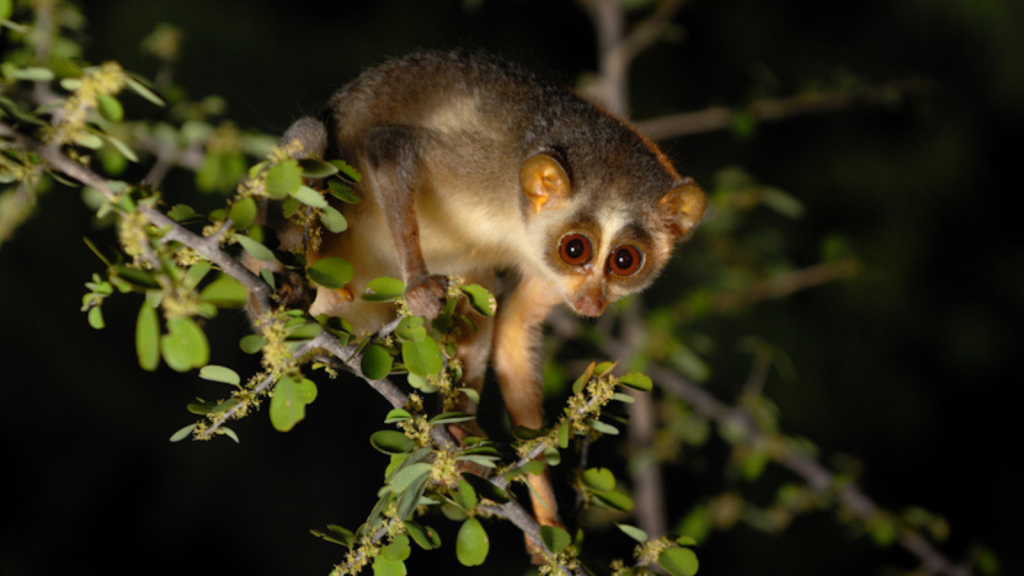
The slender loris, weighing between 85-350 grams depending on the species, is found in India and Sri Lanka. These primates have extremely thin limbs and move with careful, slow movements to avoid detection by predators. They have large, forward-facing eyes that give them excellent depth perception for hunting insects at night. Slender lorises are known for their ability to hang from branches by their feet, leaving their hands free to catch prey. They have a unique method of self-anointing, where they mix their urine with secretions from a gland on their arm and spread it over their fur, possibly as a form of protection against predators or parasites.
Dwarf Galago

The dwarf galago, also known as the bush baby, weighs between 60-180 grams. Found in sub-Saharan Africa, these small primates are known for their enormous eyes and ability to leap great distances. They can jump up to 2.5 metres vertically, thanks to the rubber-like tissues in their ankles. Dwarf galagos have a distinctive call that sounds like a human baby crying, which is why they’re often called bush babies. They have specialized grooming claws on their hind feet and extremely dexterous hands, allowing them to catch insects in mid-air with remarkable precision.
Prince Demidoff’s Bushbaby
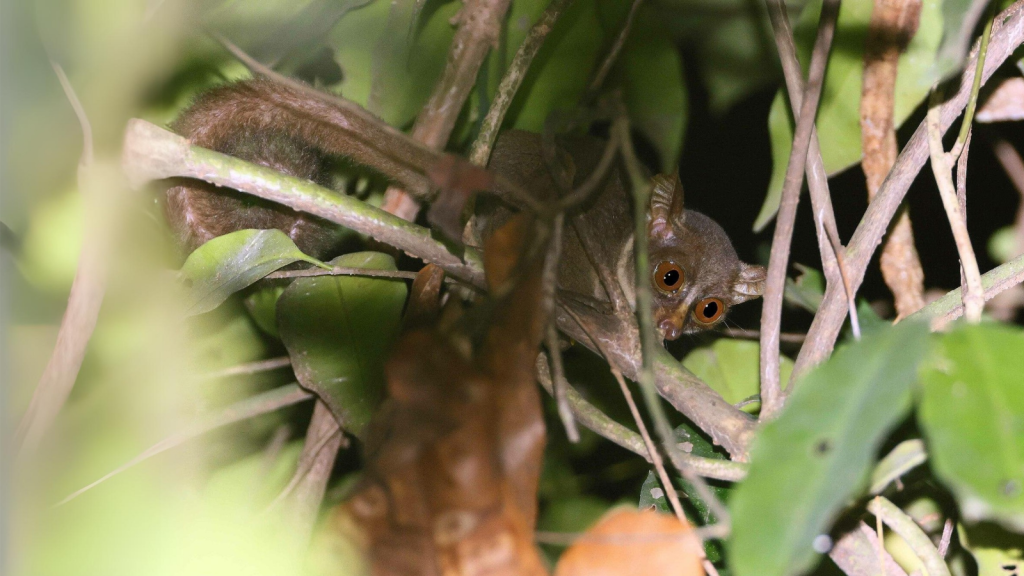
Prince Demidoff’s bushbaby, weighing between 60-80 grams, is one of the smallest galago species. Found in Central and West Africa, these tiny primates are known for their large, reflective eyes and long tails. They have specialised grooming claws on their back feet, which they use to comb their fur. Prince Demidoff’s bushbabies can leap up to 12 times their body length in a single bound. They have a unique social system where females are dominant over males, a rarity among primates.
Rondo Dwarf Galago
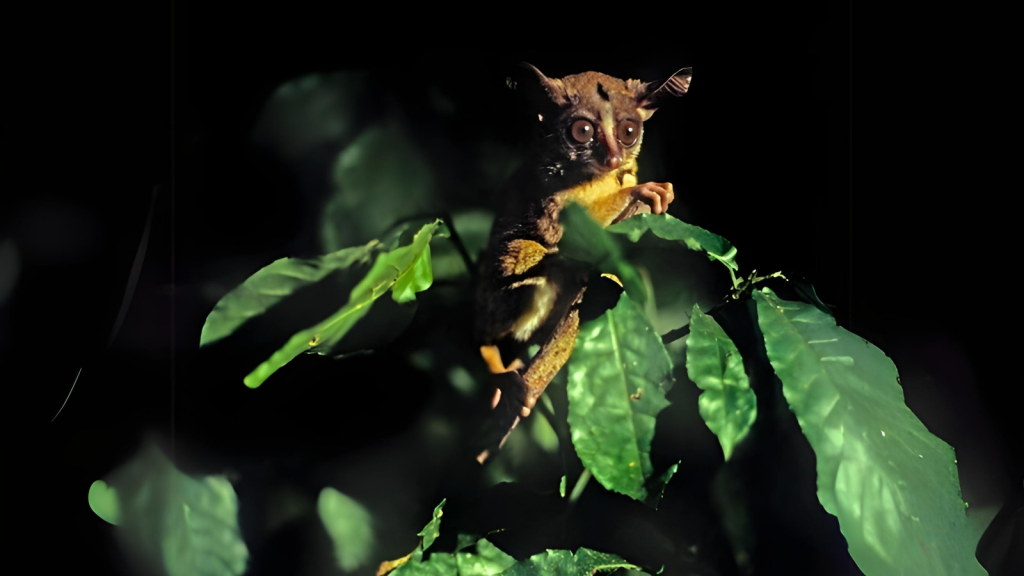
The Rondo dwarf galago, weighing around 60 grams, is one of the world’s most endangered primates. Found only in a few small forest patches in Tanzania, these tiny galagos have distinctive calls that sound like a small bird or insect. They have long, muscular hind legs that allow them to jump up to 5 metres between trees. Rondo dwarf galagos have a unique social structure, with males defending small territories that overlap with several female ranges. Their population is estimated to be less than 2,000 individuals, making them one of the rarest primates in the world.
Taita Mountain Dwarf Galago

The Taita mountain dwarf galago, weighing around 100 grams, is found only in the Taita Hills of Kenya. These small primates have a distinctive facial mask and large ears that help them locate insects in the dark. They’re known for their agility, able to catch flying insects mid-leap. Taita mountain dwarf galagos have a unique vocalization that sounds like a repetitive ‘yap’, which they use to communicate with other members of their group. Their limited range and specialized habitat requirements make them particularly vulnerable to climate change and habitat loss.
Zanzibar Bushbaby
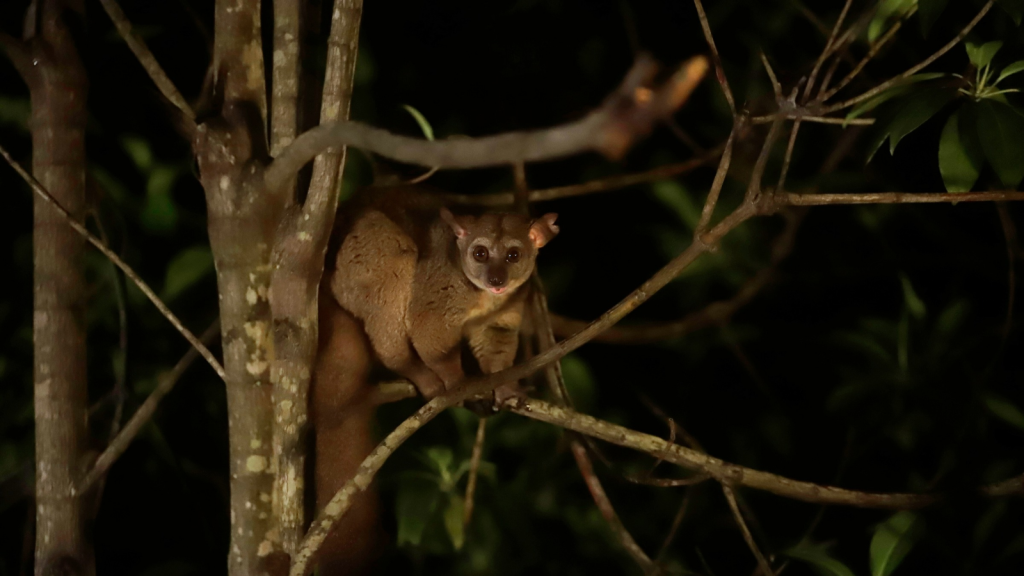
The Zanzibar bushbaby, weighing between 140-180 grams, is found only on the islands of Zanzibar and Pemba off the coast of Tanzania. These primates have a distinctive white stripe down their nose and large, membranous ears. They’re excellent climbers and can often be seen leaping between trees with great agility. Zanzibar bushbabies have a varied diet that includes fruits, insects, and even small birds and reptiles. They have a unique adaptation where their ankles can rotate up to 180 degrees, allowing them to run down tree trunks headfirst.
Mysore Slender Loris
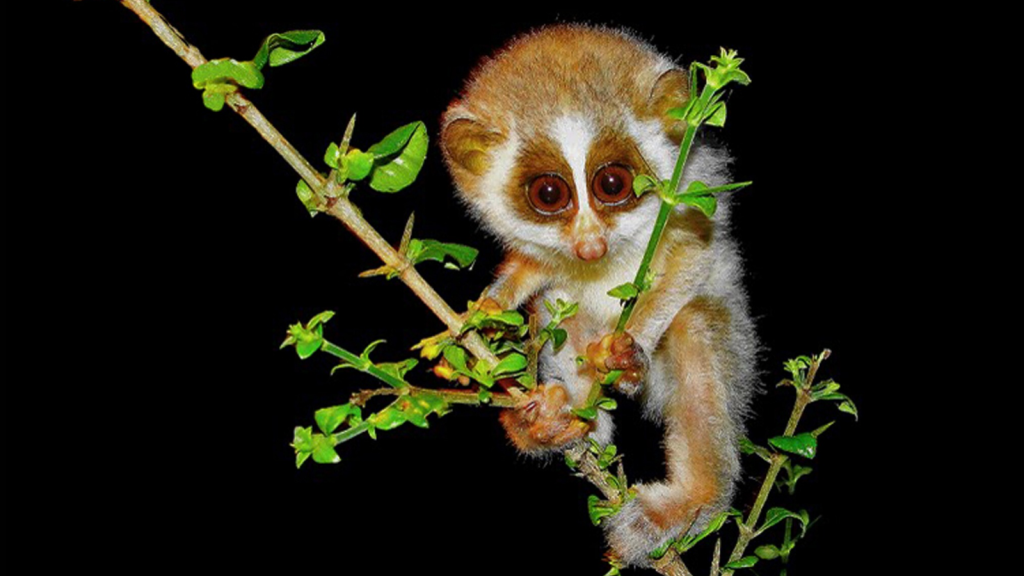
The Mysore slender loris, weighing between 85-150 grams, is found in southern India. These primates have enormous eyes that take up most of their face, giving them excellent night vision. They move with slow, deliberate movements and can remain motionless for hours while hunting. Mysore slender lorises have a unique mating call that sounds like a high-pitched whistle. They have an unusual method of detoxifying their insect prey: they rub millipedes on their fur, using the insect’s toxic secretions as a natural insecticide and mosquito repellent.
Pygmy Slow Loris
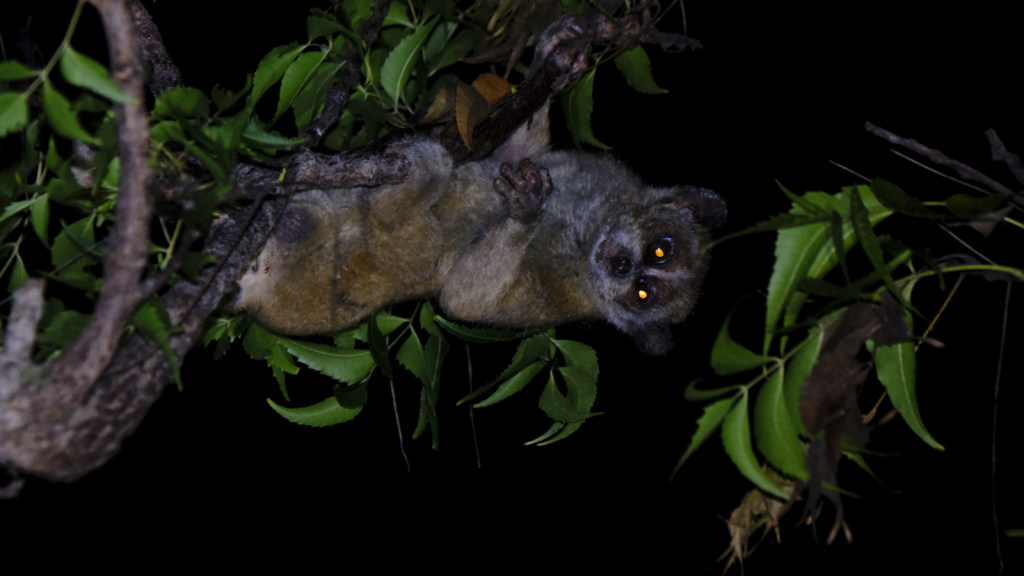
The pygmy slow loris, weighing between 360-580 grams, is found in Vietnam, Laos, eastern Cambodia, and southern China. Despite being the largest primate on this list, it’s still considered small compared to most other primates. They have a distinctive ‘face mask’ of dark fur around their eyes and are known for their slow, deliberate movements. Like other slow lorises, they have a venomous bite, which they use for defence and hunting. Pygmy slow lorises have a unique metabolism that allows them to enter a state of torpor during cold weather, lowering their body temperature and slowing their heart rate to conserve energy.

